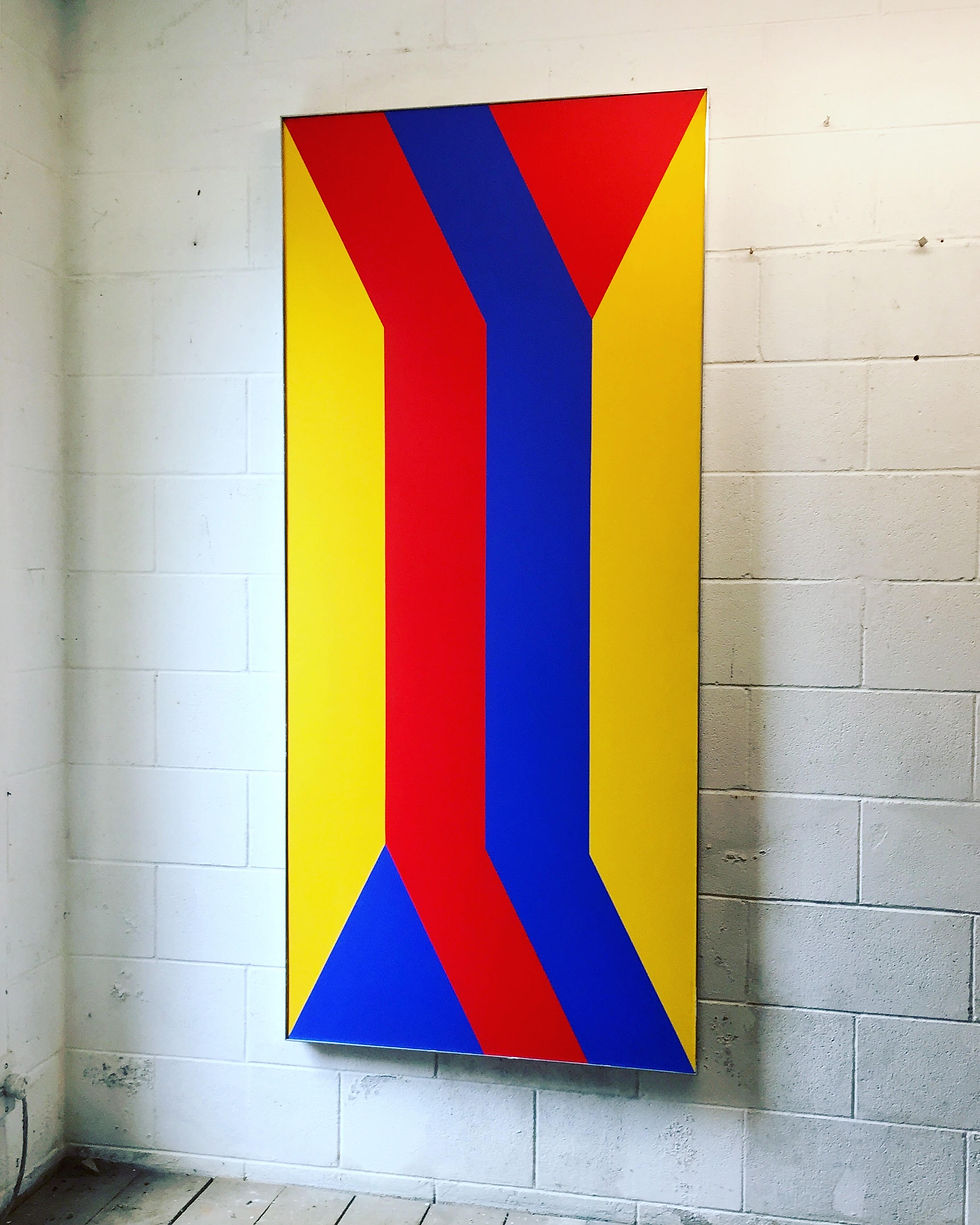Roy Good - 'Squares Cascade' Exhibition review
- roygoodartist
- Aug 1, 2022
- 2 min read
Roy Good’s latest exhibition “Squares Cascade” continues his experiments and enquiry into shape, and colour. For the most part each of the works echo the title of the show with squares of colour seeming to fall, rotate and displace in an endless search for possibilities.
A lot of the artist’s work in the past was built on, and a homage to some of the abstract artists of the past and in this show the square shapes are variations on the geometric paintings of Kasimir Malevich. As with the coloured squares of Malevich, what at first seem to be flat coloured shapes start to reveal differences in colour and texture. So, in “Squares Cascade – Eight Rotate” some of the shapes are flat colour while others have subtle variations of texture such as one might find in marbles and granites.
There is an architectural quality to these works particularly apparent in the stacked works such as “Squares Cascade – 5 Squares, 4 Rectangles” or “Squares Cascade – Stack” where the shapes are built on top of each other. In others this architectural quality can be seen in the depiction of planar forms as in “Squares Interlock”.
With many of the work it is as though the artist has based the shapes, placement and connections on mathematical or geometric principles. There might even be a hidden code or an enigmatic symbolism attached to them.
From medieval times artists and architects regarded number symbolism as important with. certain numbers and ratios having magical or talismanic properties. They also had an ethereal existence and were models for theology and an analogy for creation itself.
One is alerted to the mathematical quality of some works partly by the title such as “Squares Cascade – Arithmetic Progression” where the assemblage of varying shapes seem to conform to a predetermined set of principles and not just random placement.
There are the set of work which have dance in their titles where the shapes follow the logic of the dance steps. In “Square Cascade – Dance The Line” the various coloured squares negotiate a shifting central line and with Squares Cascade – Square Dance 1” the squares follow the ordered nature of the traditional square dance. Then there is “Squares Cascade & Rotate” where the mathematical and dance notion collide in an unexpected combination of regular and off-centre shapes.
Good has always had an interest in shaped canvases and in these works, there are a variety of shapes, both of the exterior frame as well as within the frame . There are the more complex ones such as “Squares Ascend No 1” which is like an upended ziggurat and “Squares Cascade – Fault Line” where the descending coloured squares appear to have dislodged part of the the frame. There are the couple of works which owe much to the Israeli artist Agam with the raised triangular forms producing an op art sensation with changing perspectives . “Squares Cascade Kinetic No 2” explores space and movement in an intriguing manner touching on the ides of meditation and contemplation.
Review by John Daly-Peoples



Comments